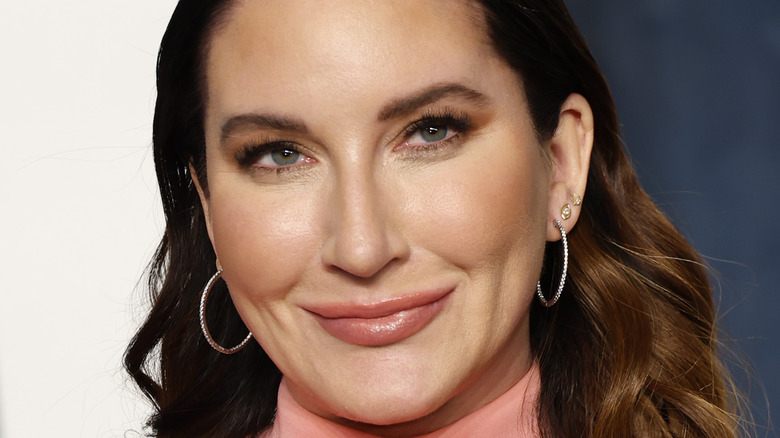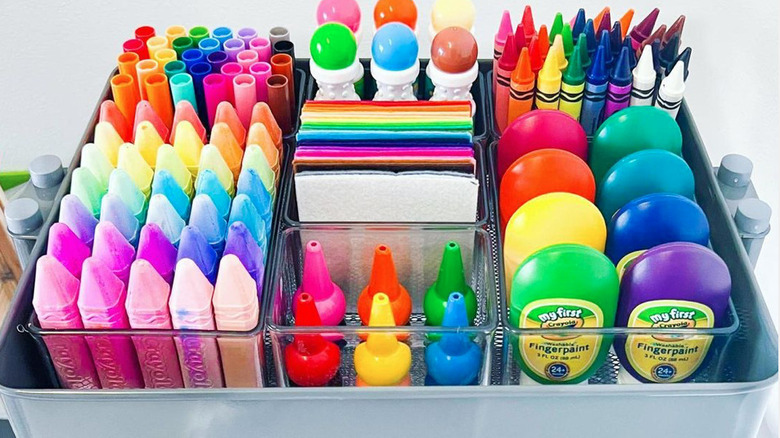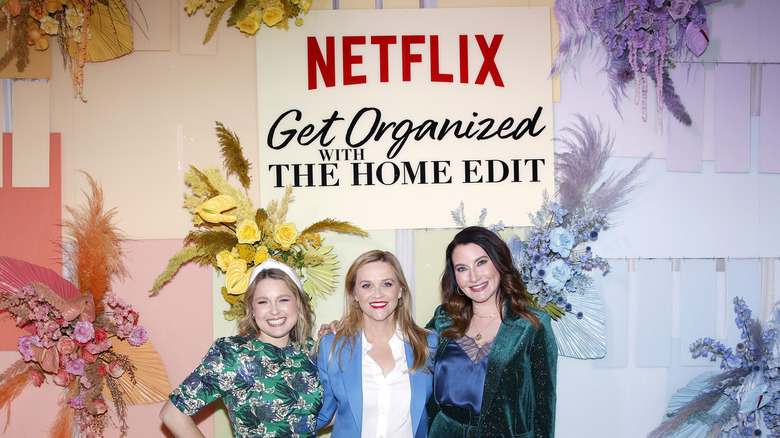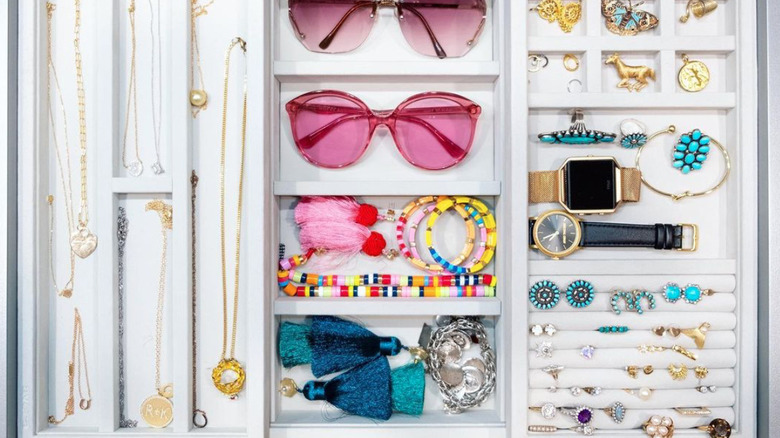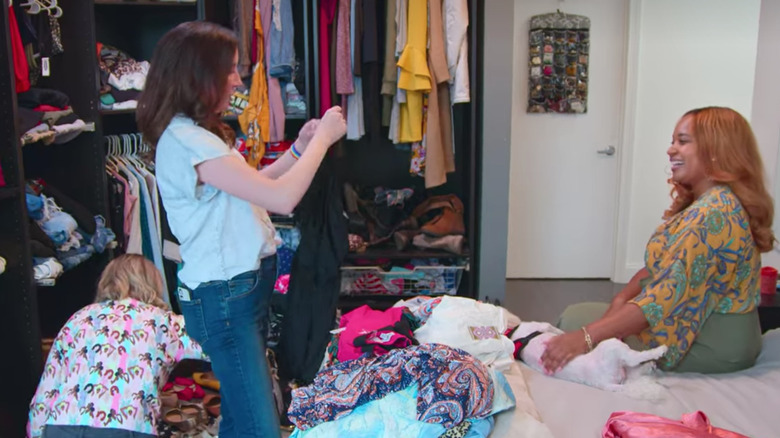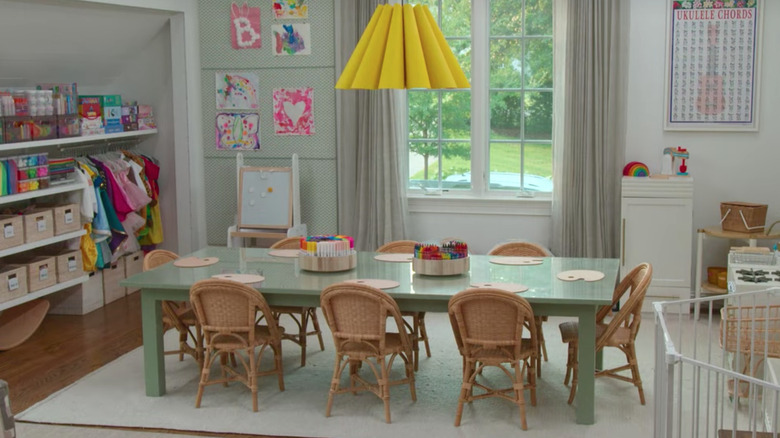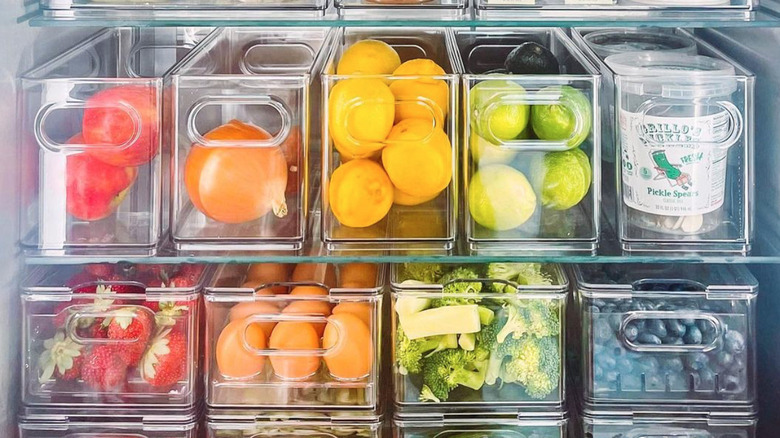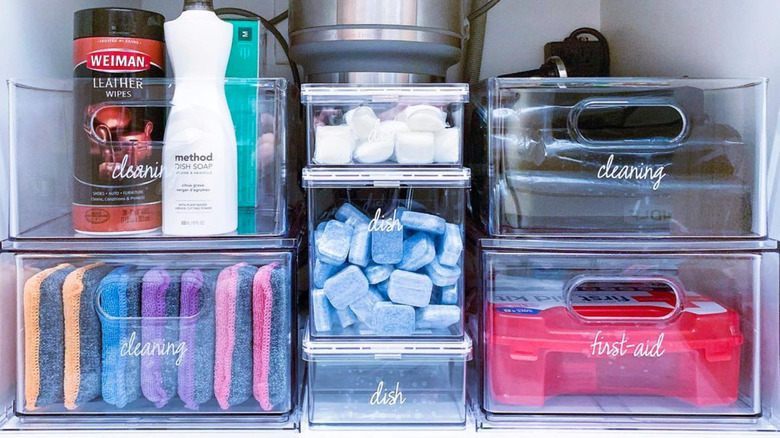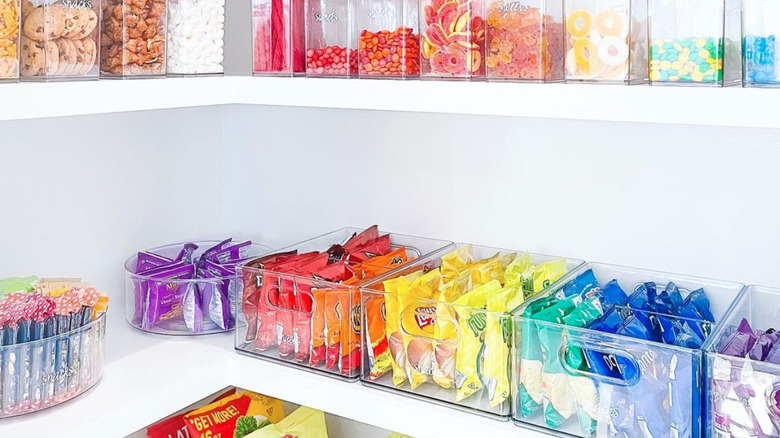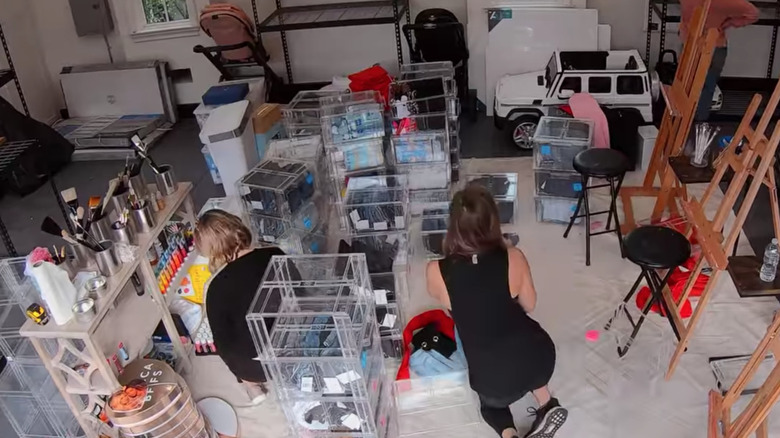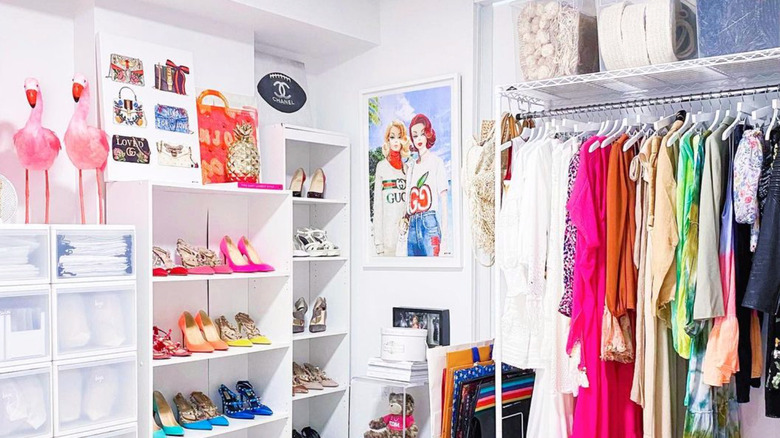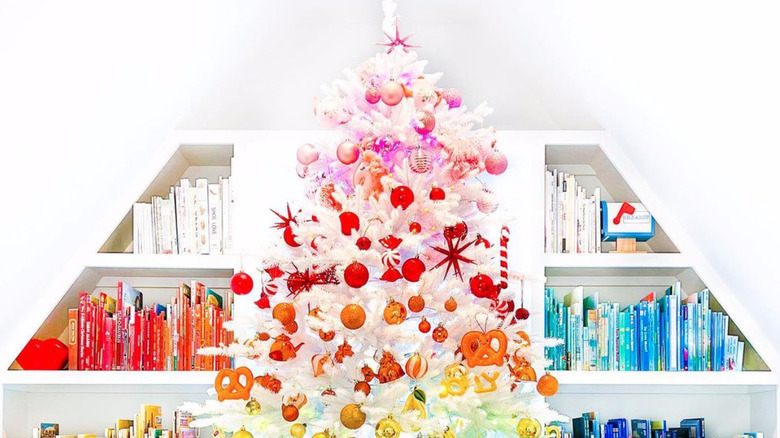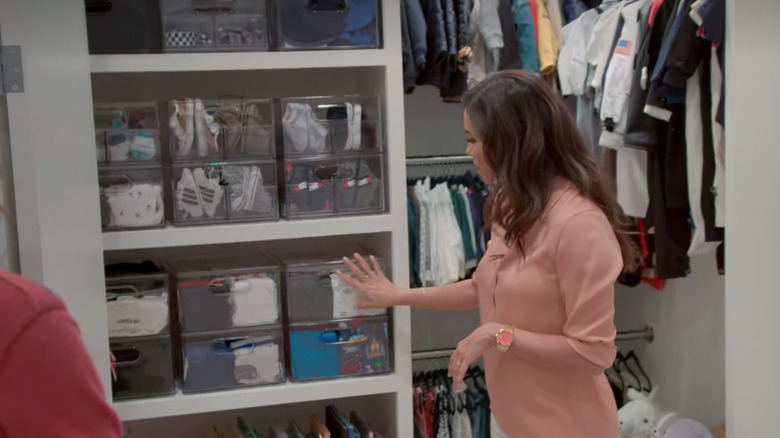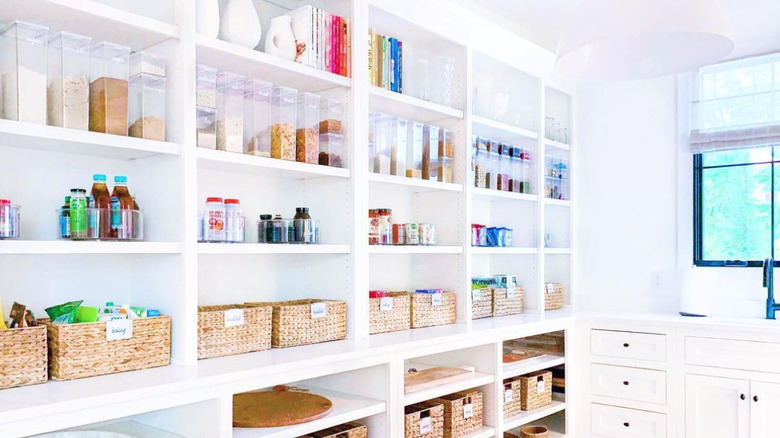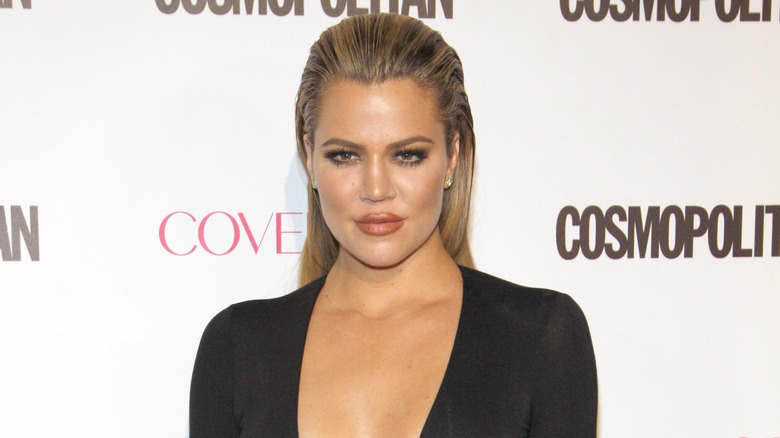How To Organize Your Home Like The Home Edit
At the height of the pandemic, everyone was doing their best to entertain themselves at home. Some were baking sourdough bread, many were trying their hands at gardening, and others were partaking in home improvement projects. What better way to spend all that free time than by improving the home where you spend all day? Matt Paxton, a downsizing and decluttering expert, told The New York Times, "The pandemic forced people to look at their stuff, they were overwhelmed by their stuff, and they took the opportunity to cleanse." The timing was perfect, and the world was ready to be introduced to the founders of The Home Edit, Joanna Teplin and Clea Shearer.
What began as a niche organizing company in Nashville has grown into over six million Instagram followers, two bestselling books, a magazine, a product line, and two seasons of a popular Netflix show called "Get Organized with The Home Edit." The Home Edit has adults and children organizing for fun and arranging things in rainbow order. If you want to join in the craze, keep reading to find out how you can organize your home like The Home Edit.
The Home Edit business
The Home Edit began in 2015 by friends Clea Shearer and Joanna Teplin. After meeting through a mutual friend, they decided to join forces and create an organizing business. Both Shearer and Teplin possess a gift for order and organization, but neither anticipated their success. "It's wild. We'll never get over it. We'll never get over any of this, honestly," Teplin told People after releasing the first season of their Netflix show. Headquartered in Nashville, the company offers local organizing services for every part of your home in several cities and will even travel to your home. Those looking for a more hands-on (and budget-friendly) approach can also use the virtual DIY service. A professional organizer from the team will collaborate with you in planning your space, advise you on the products to purchase, and assess the finished product.
The business model for The Home Edit is not traditional. They targeted most of their marketing efforts on social media (via Bizwomen). It makes sense that a visual medium like Instagram is the perfect marketing fit. A quick scroll through their grid shows a neverending carousel of bright-colored objects in acrylic bins situated according to the rainbow. Clea and Joanna's unique style and fun sense of humor made the duo the success they are today.
Their Netflix show
In September 2020, lovers of organization, fans of celebrities, and those looking for a new show to binge on Netflix met "Get Organized with The Home Edit." While some were already familiar with the team from social media, others were introduced to the duo through this funny, light-hearted, and star-studded show. Many appreciate the series for its surface-level challenges. It doesn't offer much conflict other than the occasional measuring mistake or the race to finish a project before the homeowner returns. However, the successful show is not without its critics. Some have commented that the show lacks depth and does not address the psychological reasons why our spaces get disorganized in the first place or why it's hard to let go of our items, even when we know we don't need them (via The New Yorker).
The show gives viewers a front-row seat to The Home Edit process, which is consistent whether they are helping Reese Witherspoon organize her "Legally Blonde" costumes (yes, they really did that) or an everyday family with too much stuff and not enough space. After determining their goals for the home, Clea and Joanna get to work.
Conquer one space at a time
While "Get Organized" may have you excited and ready to organize your entire home, you may want to slow down. Clea and Joanna are big advocates of starting small for organizing. For example, instead of trying to tackle your whole kitchen at once, start with a drawer. "You should always tackle one space from start to finish before moving onto the next," Teplin told Elle Decor.
Some refer to this as microproductivity, a strategy that will help you conquer many tasks, not just organizing (via Trello). Due to the overwhelming nature of large projects and the human need to receive feedback, breaking a project into smaller parts makes it much more manageable and will make you more likely to complete the whole project. "Breaking tasks down helps us to see large tasks as more approachable and doable, and reduces our propensity to procrastinate or defer tasks, because we simply don't know where to begin," Melissa Gratias, a workplace productivity coach and speaker, told Trello. Once you decide which area to conquer first, it's time to get to work.
Edit
What many call "purging," Joanna and Clea refer to as the "edit" stage. When you edit, you go through your items and determine what you need and do not need. Many experts agree that this step is not only the most crucial but can also be very cathartic. "When people go through the process of decluttering, they feel a sense of freedom and liberation. It's a reclaiming of a sense of mastery and control. They feel more competent and efficient," Catherine Roster, professor of marketing and director of the Behavioral Lab at the University of New Mexico, told Everyday Health.
With this knowledge, The Home Edit developed some tips to make the editing stage as painless as possible and shared them in their book, "The Home Edit Life." When assessing whether to donate, trash, or keep an item, the team recommends that you ask yourself: Do I need it? Do I use it? Do I ever want to use it? Do I like it? Is it sentimental? If you answer yes to these questions, keep it and find a space for it in your categories. If not, it's time to say goodbye.
Categorize
Once you have determined what items you are keeping, it is time to divide those items into categories or zones. In a shared space like a pantry, for example, thoughtful zones are a primary pillar to maintaining long-term organization. In an interview with Today, Clea said, "We love having different zones for different categories so that kids and adults can easily put things away." Snacks, breakfast, baking, sweets, dinner, baby food, and paper goods are all examples of categories that can exist in your pantry (via The Home Edit). The ones you choose should meet the needs of your family.
Sometimes finding the right category can be tricky, even for seasoned professionals like Clea and Joanna. In Season 1 of "Get Organized," the team hits a bump in the road when they can't place red pepper flakes in a category (via Netflix). Should it go alongside salt and pepper? Or is the international flavors category more appropriate? While this dilemma would not affect the typical organizer, it's a good reminder that the categories you create should be inclusive enough that you can properly execute them without too many questions.
Contain
After completing your edit and dividing the remaining items into thoughtful categories, it's time to contain them. Containing is a crucial step in The Home Edit process because it helps give your items a place to go and lets you take advantage of vertical space by stacking up.
Among the many bins, baskets, hangers, and tubs that the team uses, acrylic bins are their signature. These clear bins provide ideal storage space and allow you to see the items inside. Another benefit of using containers is that it opens up space in the closet or pantry you're organizing. If you're worried that putting things in containers means you won't be able to store as much, think again! They actually make stackable containers that will allow you to utilize the vertical space you can't use now. Once you can see everything you have (because they're in the clear bins), you may realize that you don't need to buy as much. If you're unsure where to begin, you can shop The Home Edit collections at The Container Store and Walmart — you know the products are approved!
Don't forget the labels
Once your items are divided and contained within their categories, it's time to label. Labeling ensures the longevity of your organizing efforts because it keeps you accountable for where every item should go. According to Vicki Norris' Restoring Order, labeling makes it difficult to become disorganized. After all, it is difficult to put a granola bar in a basket labeled "chips."
When deciding how to label, use your zones/categories as a guide. The labels should be in the sweet spot between generic and specific (via The Home Edit). In the bathroom, this could mean using a tag like "body." You may have created the label to store your moisturizer, but it is also the perfect place to put deodorant, sunscreen, and perfume. If you want ones like The Home Edit but don't know where to start, don't fret. Make your space look like the pros by buying the signature vinyl tags from The Home Edit.
Maintain
The Home Edit philosophy is about more than organizing a space. They are creating an organizing system that users will be able to maintain. Maintenance is a part of the organizing process because maintenance is only possible when the rest of the system is in place. If you have edited out the items you don't love, categorized them thoughtfully, and contained them in products that make sense for your space, then you will be able to maintain it.
According to The Home Edit, labeling will help you maintain your organization system over the long term. Their rainbow-colored blueprint helps you identify intuitively where every item in your home belongs. When paired with actual label tags, your partner, friends, houseguests, and anyone else in your home can clearly see where to put things and help maintain your organization system. The pantry, bathroom, closet, and storage room are places where labels work wonders.
Create a logical flow
First and foremost, your organization system should be functional and meet your needs. According to "The Home Edit Life" from Penguin Random House, you should provide context to each zone to strengthen the organization system.
On "Get Organized with The Home Edit," you often hear the team analyzing a project according to the flow. In Season 2, The Home Edit team conquered an open closet for a client in Atlanta (via Netflix). Teplin asks the client to walk her through her morning routine to understand her needs. When the client says she selects her shoes before the rest of the outfit, Clea and Joanna knew that shoes had to have a prominent spot in the closet. They used the client's unique daily routine to create a closet makeover. They also divided the area into work clothes and fun, flirty pieces because the client was active in the dating market. The Home Edit team created a flow to her closet that made sense, fit her routine and lifestyle, and would be easy to maintain.
ROYGBIV color system
The Home Edit team likes to arrange items in rainbow order when organizing a space. "This is partially a design decision because things in rainbow order are pleasing to the eye, but even more importantly it creates a visual flow that naturally clicks with the brain," Joanna and Clea told Kidspot. While adults will appreciate the aesthetic and style that comes with organizing according to the rainbow method, it makes organizing a fun and playful game that kids will love (via The Home Edit).
One of the team's favorite places to organize by the rainbow is on children's bookshelves. Not only does it beautiful, but kids can help put the book back in the correct spot. They might not know how to organize in alphabetical order, but they can see which colors belong together on a shelf. You can also use the rainbow method to help organize kids' toys.
Displaying sentimental items
You're not alone if you have sentimental items you don't know where to put in the home. Meaningful personal items are things that everyone has to varying degrees. Some may have pieces of clothing, photos, documents, or objects from loved ones. Since many sentimental items are meaningful because they come from someone else, it can be challenging to arrange them in your home. Many nostalgic items are shoved to the back of a closet or hidden in a cupboard in the garage.
When dealing with a sentimental object, you have two options: store or display. As Joanna Teplin told People, "If it's a physical item that you are really attached to, think about if you're putting it in your sentimental box, or displaying it on a shelf or wall in a shadow box." The Home Edit team is not against keeping sentimental items. However, they want to ensure you honor them by displaying them properly in your home.
Find a creative solution
Since no two homes, closets, pantries, or drawers are the same, no organizing solution is the same either. Viewers of "Get Organized with The Home Edit" will notice that Joanna and Clea modify a space to fit their client's unique needs. They add, remove, or replace shelves, add extra rods for hanging clothes, replace furniture, and utilize underused spaces.
In "Get Organized," the team visits Eva Longoria's house to help her son transition into a new room. While they were only working on his closet, this space is clearly important because of the sheer volume of items inside. Since Longoria wanted all of her son's clothes hung up, the team needed to add additional hanging space to the closet. Luckily, they always have a handy person on standby. For those who want to take a DIY approach (or who rent and can't renovate), a tiered hanger from Bed Bath & Beyond can help you organize your bedroom closet.
Storing backstock
Lovers of Costco and the Buy One, Get One sale, rejoice. The Home Edit has a solution for storing multiples and extras products! In a store, backstock is leftover stock. In your home, backstock is the backup item hanging around the shelf. Maybe you have a spare bottle or two of your favorite shampoo in the bathroom, extra laundry detergent, or multiple boxes of pasta in the pantry.
According to The Home Edit Instagram, you can maximize your space by storing backstock above and below in a room. This tip means using the ground or a top-shelf that is too tall to hold things that you don't need to access daily. The main goal of storing backstock is to keep your high-traffic spaces clutter-free. Creating a designated area for backstock will make you aware of what you have so you don't overbuy, even if you can't pass up a good sale.
Famous clients
The Home Edit's organizing portfolio is overflowing with celebrity clients. If you thought the team started their business with the average Joe and then worked their way up to Hollywood's elite, think again. Their first client was Christina Applegate, who received Clea's and Joanna's expertise in exchange for an Instagram post promoting The Home Edit. According to New York Post, Applegate introduced the duo to Selma Blair, and just like that, the floodgates of opportunity were open. The Home Edit was the official organizer of the stars.
One of The Home Edit's most notable clients is Khloe Kardashian (via The Home Edit). Fans of Khloe and longtime followers of The Home Edit will remember the kitchen, closet, and garage that Joanna and Clea organized for Khloe. When she moved into her new 18,000-square-foot home, she enlisted the help of her organizing gurus. Though Khloe Kardashian's pantry features more tan and gray than white and acrylic, it has The Home Edit touch. Additionally, the stars of The Home Edit helped Drew Barrymore tackle her kitchen. Starting a home improvement project can be daunting, especially when it's an organizing project. If you start small and follow The Home Edit steps, your home can look as organized as Joanna and Clea's star clients.
